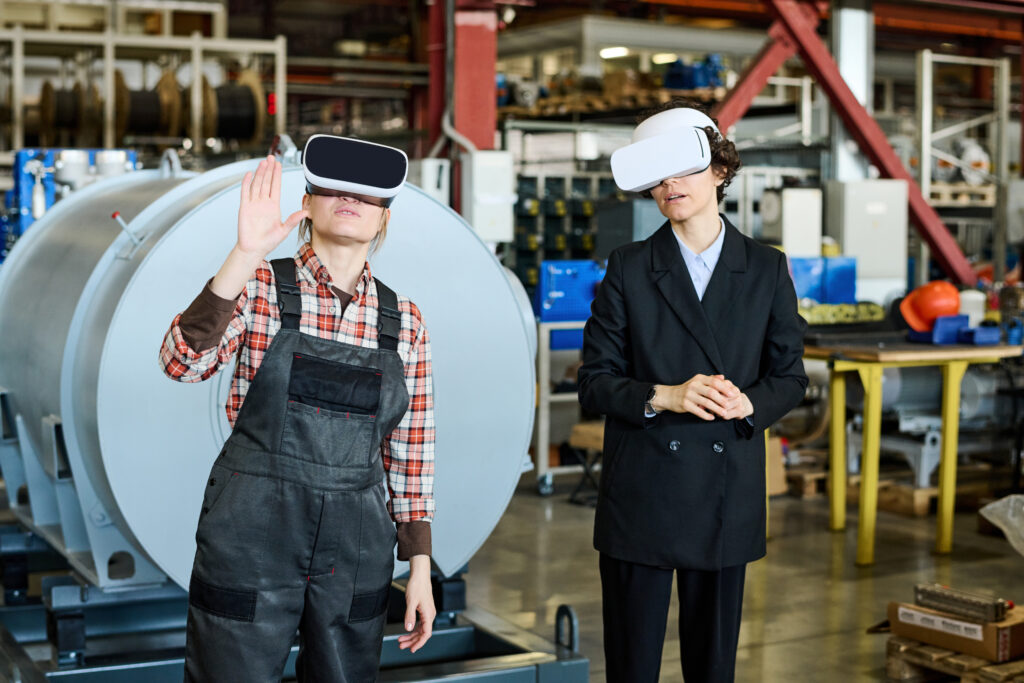As technology continues to evolve, industries are finding innovative ways to enhance safety and efficiency in the workplace. One such innovation is the use of Virtual reality (VR) training simulations, particularly in hazardous work environments. This article will delve into the benefits and limitations of VR training simulations, with a special focus on how digital workflow procedure builders like FAT FINGER can enhance these simulations.
What is Virtual Reality (VR) Training?
Virtual reality (VR) training involves the use of computer technology to create a simulated environment. Unlike traditional user interfaces, VR places the user inside an experience, allowing them to interact with 3D worlds. This immersive environment can be similar to the real world or it can be fantastical, creating an experience that is not possible in our physical reality.
The Role of FAT FINGER in VR Training
FAT FINGER is a digital workflow procedure builder that empowers front-line teams to do their work correctly every time. It allows you to build checklists, workflows, and digital procedures that unlock operational excellence. With features like Drag & Drop Workflow Builder, Mobile & Desktop Workflows, Dashboards, Integrations, Augmented Reality, Connect IoT Devices, and Artificial Intelligence Coaching, FAT FINGER can significantly enhance the effectiveness of VR training simulations.
Benefits of VR Training Simulations

- Safe Learning Environment: VR training simulations provide a safe environment for employees to learn and make mistakes without real-world consequences. This is particularly beneficial in hazardous work environments where mistakes can lead to serious injuries or fatalities.
- Improved Retention and Recall: Studies have shown that VR training improves retention and recall compared to traditional training methods. This is because VR training is immersive and interactive, engaging multiple senses and making the learning experience more memorable.
- Cost-Effective: While the initial investment in VR technology can be high, it can save companies money in the long run by reducing the need for physical training materials and facilities.
Limitations of VR Training Simulations
1. Accessibility: VR training simulations require specific hardware that may be expensive or difficult to obtain. This type of technology is not universally accessible, which can limit who can participate in VR training simulations.
2. Technical difficulties: VR training simulations can sometimes suffer from technical glitches or malfunctions, which can disrupt the training process and potentially harm the user experience.
3. Health-related issues: Extended use of VR can cause cybersickness, which is similar to motion sickness. Other health issues can include eye strain, headaches, and in some cases, psychological effects.
4. Learning curve: Some people might find it difficult to adapt to the VR environment and technology. They may struggle with navigating the virtual world, which can hinder their learning progress.
5. Lack of human interaction: Despite the immersive experience that VR provides, it still lacks the human touch. Non-verbal cues, body language, and real-time feedback that are crucial in some training cannot be replicated in VR.
6. Limited to visual and auditory senses: VR currently mainly focuses on visual and auditory senses. Other senses like touch, smell, and taste are not incorporated, which can limit the realism of some training simulations.
7. Development time and cost: Creating VR training simulations can be both time-consuming and costly. This is especially true for complex simulations that require a high degree of detail and realism.
Overcome The Limitations of VR Training Simulations With FAT FINGER

Virtual Reality (VR) training simulations have become increasingly popular in various sectors including healthcare, military, entertainment, and education. However, they do have certain limitations, such as lack of real-time feedback, difficulty in tracking progress, and limited customization. FAT FINGER, an innovative software solution, can help overcome these limitations by integrating with VR.
1. Enhancing Interactivity: One of the key limitations of VR training simulations is the lack of interactivity. With FAT FINGER, users can interact with the system using simple, intuitive gestures. This enhances the learning experience and makes it more engaging.
2. Real-time Feedback: FAT FINGER allows for real-time feedback during VR training simulations. This means that as soon as a user makes a mistake or accomplishes a task, they receive immediate feedback. This not only helps them correct their mistakes but also reinforces positive behavior.
3. Customization: With FAT FINGER, businesses can customize their VR training simulations according to their specific needs. This includes creating custom scenarios, adding specific tasks, and even adjusting the difficulty level.
4. Tracking Progress: FAT FINGER allows businesses to track the progress of their employees during VR training simulations. This includes tracking their performance, measuring their improvement, and identifying areas where they might need further training.
5. Integration: FAT FINGER seamlessly integrates with existing VR systems, making it easy for businesses to implement. This means that businesses do not need to invest in new hardware or software to use FAT FINGER.
6. Scalability: FAT FINGER is a scalable solution. This means that it can be used by businesses of all sizes, from small start-ups to large corporations.
7. Easy to Use: FAT FINGER is designed to be user-friendly. This means that even individuals who are not tech-savvy can easily use it.
Case Study: VR Training in the Oil and Gas Industry
The oil and gas industry is one of the sectors that has embraced VR training, due to the high-risk nature of the work. Companies like Shell and BP have implemented VR training programs to prepare workers for emergency situations that would be too dangerous to replicate in real life. These programs have resulted in improved safety records and reduced training costs.
Conclusion
While VR training simulations have their limitations, the benefits they offer, particularly in hazardous work environments, are significant. They provide a safe, immersive, and cost-effective way for employees to learn and practice their skills. Furthermore, with the integration of digital workflow procedure builders like FAT FINGER, these simulations can be enhanced to provide even more value.
If you’re interested in exploring how VR training simulations and FAT FINGER can benefit your company, sign up for a free trial or request a demo today.


